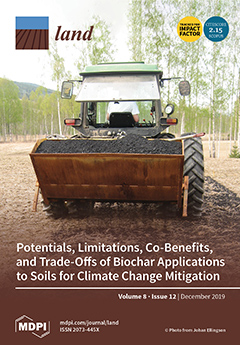Resource information
The restoration of vegetation in abandoned farmlands is an effective approach to control soil erosion on the Chinese Loess Plateau. However, few studies have investigated the effect of natural restoration age on the infiltration patterns and preferential flow in soil layers. This study examined the effect of the temporal variations in the degree of preferential flow and their contribution on the total infiltration in abandoned farmlands restored with different vegetation communities. In total, four sites were investigated, namely site AF3, AF12, AF18 and AF25 of restoration age of 3, 12, 18 and 25 years, respectively. A traditional dye tracer experiment was adopted to visualize the water flow behavior in the four sites. A semi-variance analysis was conducted to interpret the spatial variability of the soil water induced by infiltration. The results showed that both the soil properties and the root systems improved with the increased natural restoration ages combined with the effect of the plant species. The degree of preferential flow from the lowest to the highest occurred in AF3, AF12, AF18 and AF25, which was mainly affected by the development of root systems. Also, the abundant lateral root and steeper slope may have caused the presence of lateral flow in AF18 and AF25. Meanwhile, the spatial variability of the soil water in the infiltration patterns through vertical soil profiles increased from AF3 to AF25. Compared to AF3, the infiltration volume through preferential pathways in AF12, AF18 and AF25 increased by 1.73 times, 1.94 times and 4.09 times, respectively. Therefore, the preferential flow was improved in abandoned farmland in the presence of natural vegetation restoration that can increase water storage in the deep soil layer and reduce surface runoff and erosion.


